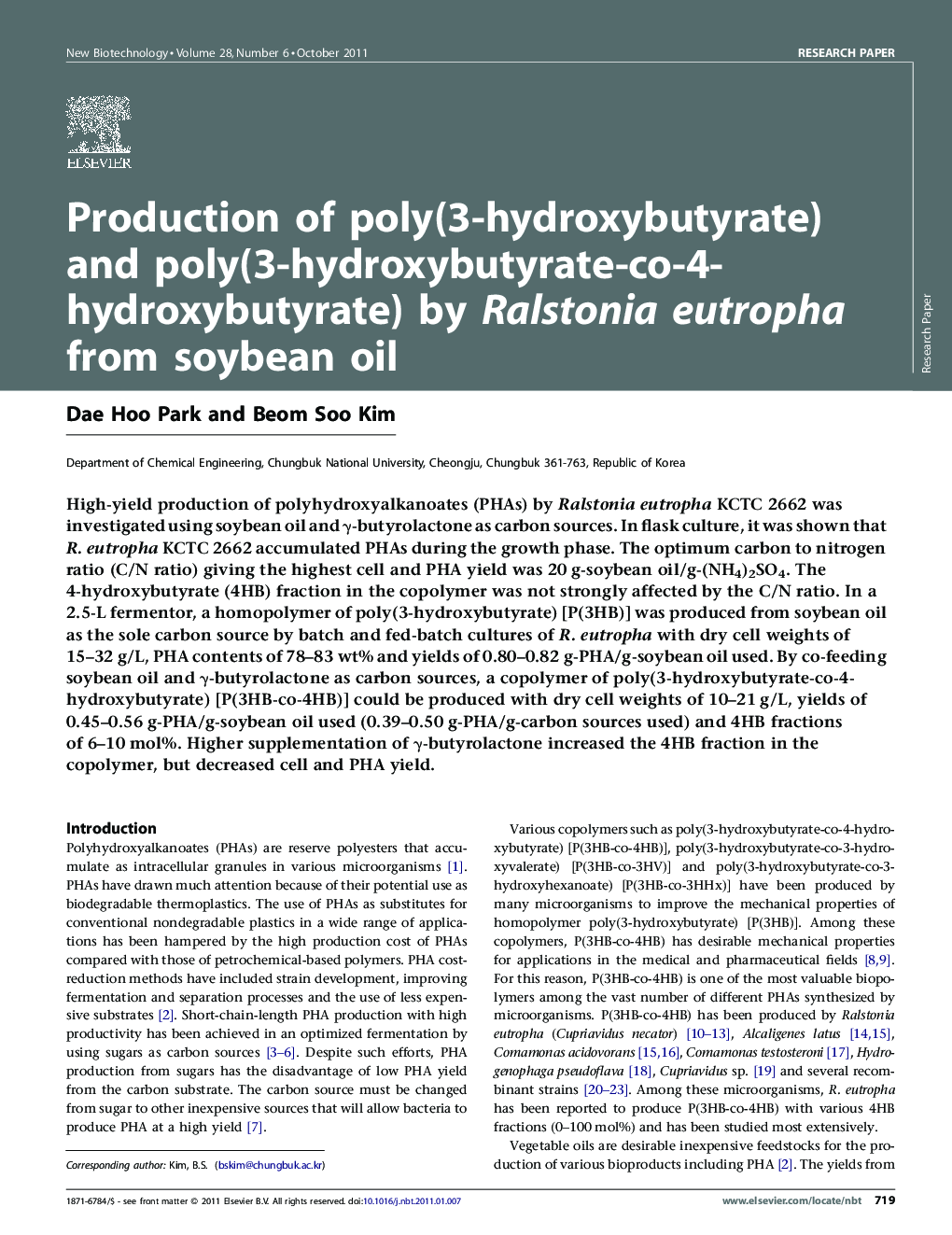| Article ID | Journal | Published Year | Pages | File Type |
|---|---|---|---|---|
| 33487 | New Biotechnology | 2011 | 6 Pages |
High-yield production of polyhydroxyalkanoates (PHAs) by Ralstonia eutropha KCTC 2662 was investigated using soybean oil and γ-butyrolactone as carbon sources. In flask culture, it was shown that R. eutropha KCTC 2662 accumulated PHAs during the growth phase. The optimum carbon to nitrogen ratio (C/N ratio) giving the highest cell and PHA yield was 20 g-soybean oil/g-(NH4)2SO4. The 4-hydroxybutyrate (4HB) fraction in the copolymer was not strongly affected by the C/N ratio. In a 2.5-L fermentor, a homopolymer of poly(3-hydroxybutyrate) [P(3HB)] was produced from soybean oil as the sole carbon source by batch and fed-batch cultures of R. eutropha with dry cell weights of 15–32 g/L, PHA contents of 78–83 wt% and yields of 0.80–0.82 g-PHA/g-soybean oil used. By co-feeding soybean oil and γ-butyrolactone as carbon sources, a copolymer of poly(3-hydroxybutyrate-co-4-hydroxybutyrate) [P(3HB-co-4HB)] could be produced with dry cell weights of 10–21 g/L, yields of 0.45–0.56 g-PHA/g-soybean oil used (0.39–0.50 g-PHA/g-carbon sources used) and 4HB fractions of 6–10 mol%. Higher supplementation of γ-butyrolactone increased the 4HB fraction in the copolymer, but decreased cell and PHA yield.
